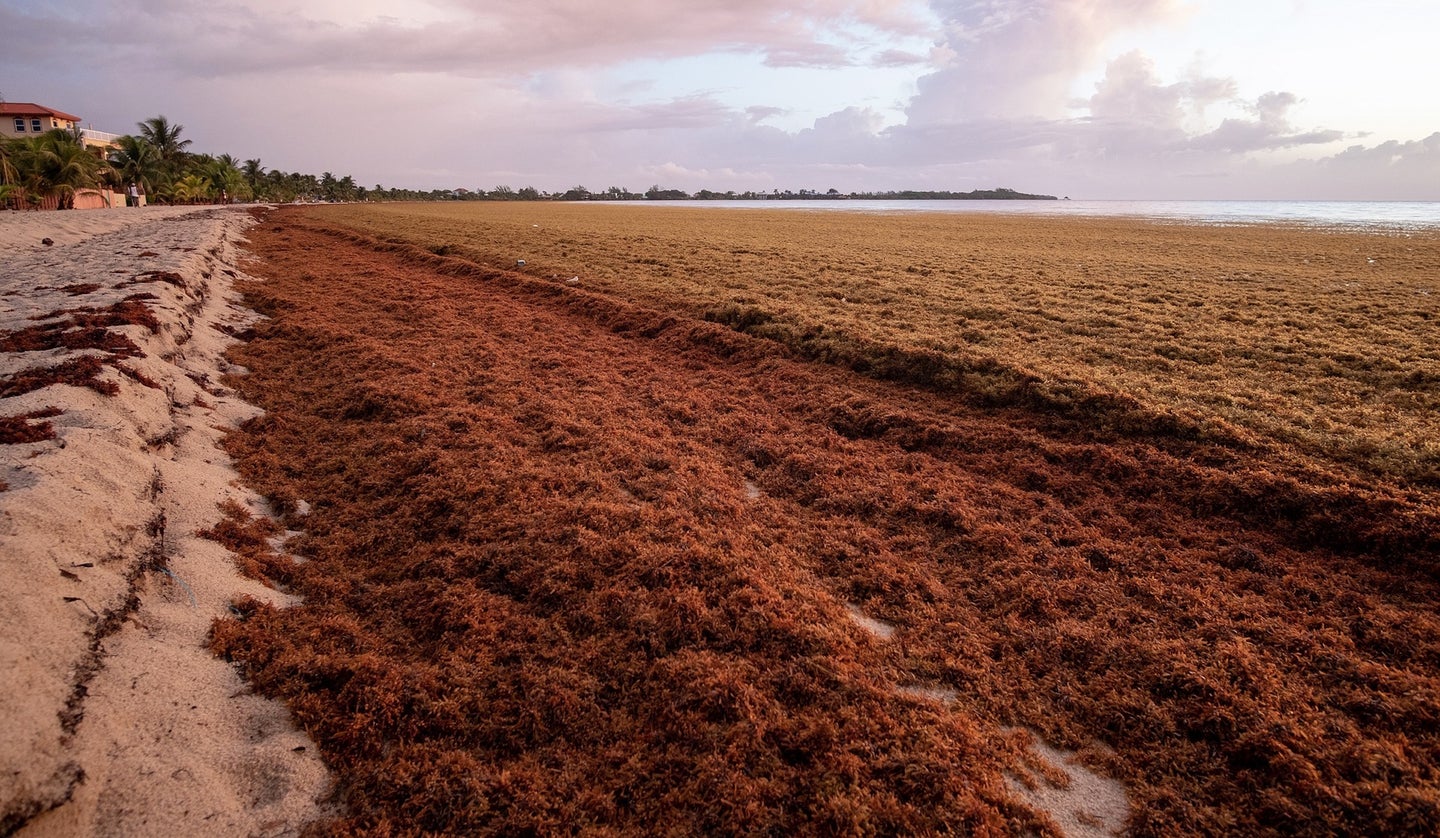Massive 5,000-Mile-Wide Seaweed Belt About to Hit Florida

A 5,000-mile-wide belt of sargassum seaweed in the Atlantic Ocean is making its way toward Florida, the Caribbean, and the Yucatan Peninsula. Satelied images show a scattered mass of seaweed—known as the Great Atlantic Sargassum Belt—heading toward land earlier than usual. Forecasters expect the seaweed to wash up on beaches in the next few months.
Sargassum comes from the Sargasso Sea—a 2-million-square-mile stretch of water in the Atlantic Ocean. There, it provides habitat for marine life and birds. However, once ashore, sargassum is a problem for beachgoers and waterfront resorts. The pungent seaweed decomposes in the sun and smells like rotten eggs. It is difficult to get rid of, and it tangles up animals and people who try to walk through it. When it’s left to rot on beaches it can become more of a problem, negatively affecting coastal ecosystems and supporting the growth of fecal bacteria. Sargassum also releases ammonia and hydrogen sulfide as it decomposes.
Pieces of Sargassum have already hit Key West, but more is expected over the summer. Researchers say sargassum drifts ashore every year, but this year is different because it’s coming early. There is an estimated 10 million metric tons of sargassum in this year’s crop. Rick Lumpkin, director of the Physical Oceanography Division at NOAA, told the Associated Press that it’s “one of the strongest years, but not the strongest.”
According to the Food and Agriculture Organization of the United Nations, a bit influx of sargassum can negatively impact fishing. Sargassum can choke out coral reefs, killing and injuring wildlife. In the past, sargassum has caused a 37 percent decrease in Dolphinfish and 57 percent decrease in flying fish landings in the Caribbean. The seaweed also bogs down boat propellors and steering equipment and fowls up fishing gear, making fishing more difficult.
Read Next: Video: Dad Gets Pinky Bitten Off By Shark, Takes it Like a Champ
As to what causes the mass of seaweed to get so big, scientists are still searching for answers. Some say agricultural runoff from the Amazon and Orinoco rivers could contribute to the growing western side of the belt. Lumpkin says that dust drifting over the ocean from the Sahara could bring nutrients like iron to the seaweed, helping it grow more in some years than others. Changing wind patterns and other factors could also influence sargassum growth.
The post Massive 5,000-Mile-Wide Seaweed Belt About to Hit Florida appeared first on Field & Stream.
Articles may contain affiliate links which enable us to share in the revenue of any purchases made.
